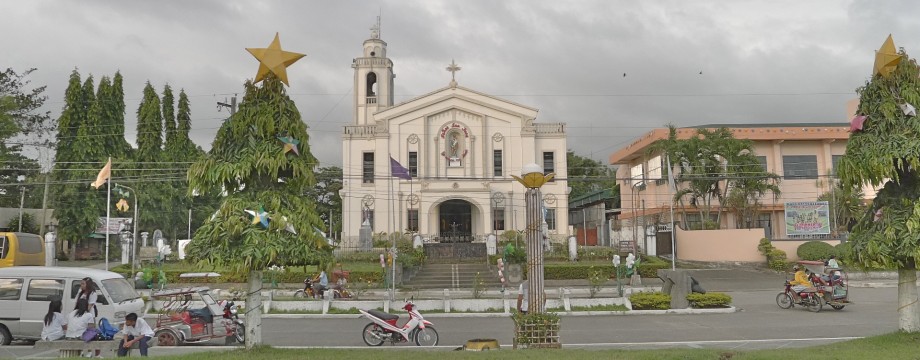About the Church: On May 8, 1892 the first Chapel by the Capuchins opened to the Public, devoted to Divina Pastora. On the same year, Father Berardo de Cieza requested Manuel Flores to sculpt a statue to our Lady of Lourdes. On February 1893, the first Novena to Our Lady of Lourdes. On May 23, 1893, Superior Rev. Fr. Berardo de Cieza asked His Excellency Mons. Bernardino Nozaleda, OP, Archbishop of Manila, to establish a confraternity. The Archbishop gave out a decree declaring canonically erected and founded the chapel of Capuchins the confraternity of the Immaculate Conception of the Blessed Virgin Mary of Lourdes, approved as well all the graces corresponding such religious society on September 15, 1893.
In 1894 a second image was sculpted by Mr. Manuel Flores, with the guidance and cooperation of Fr. Antonio of Valencia. On November 1896 Martina Azucena was miraculously cured from her incurable illness in front of the statue.
The enlargement of the chapel was started by Architect D. Federico Soler and the donation of Mr. Moron for the love and devotion to the Virgin of Lourdes on September 1897. On February 3, 1910, the new church dedicated to Our Lady of Lourdes, exclusively built with the contribution of the faithful was inaugurated.
February 9, 1946, the Capuchins obtained the official authorization from the government to restore the church of Lourdes in Intramuros. However, the Capuchins decided to build a beautiful and wide church in Quezon City, Retiro St. because Intramuros was a deserted place, abandoned by people and nobody’s land.
On January 30, 1950 Laying of the cornerstone and solemnly blessed by Mons. Olano. Immediately the work of construction under the direct supervision of Engineer and contractor, Mr. Marquez. The works of the front altars and walls are advanced already and it looks very similar to the convent of San Antonio in Zaragoza Spain. The construction was under the administration of Fr. Bienvenido of Arbeiza as Custos.
On February 10, 1951 The newly built church of Our Lady of Lourdes received and sheltered the two statues. On August 15, 1951 The archbishop of Manila, Mons Reyes was one who officiated in so solemn an occasion. The inauguration was attended by piles of people, among were many important people from Manila, the “ninongs”, sponsors and benefactors, President of the Philippine Senate, Don Mariano Jesus Cuenco, a representative from the Spanish Embassy and Miss Gullon, the daughter of the Ambasssador.
The National Shrine of Our Lady of Lourdes:

The National Shrine of Our Lady of Lourdes
Where is the Church Located: the Church is located in Kanlaon Street cor. N.S. Amoranto Street, Sta. Mesa Heights, La Loma,Quezon City, Philippines
Map Showing the Location of the Church:

National Shrine of Our Lady of Lourdes
What is the Contact Number of the Church: 731-9306
Other Pictures of the Church:
-

-

-

-

-

-

-

-

-

-

-

-

-

-

-

-

-

-

-

-

-

-

-

-

-

-

-

-
National Shrine of Our Lady of Lourdes
-

-

0.000000
0.000000





























































































































































